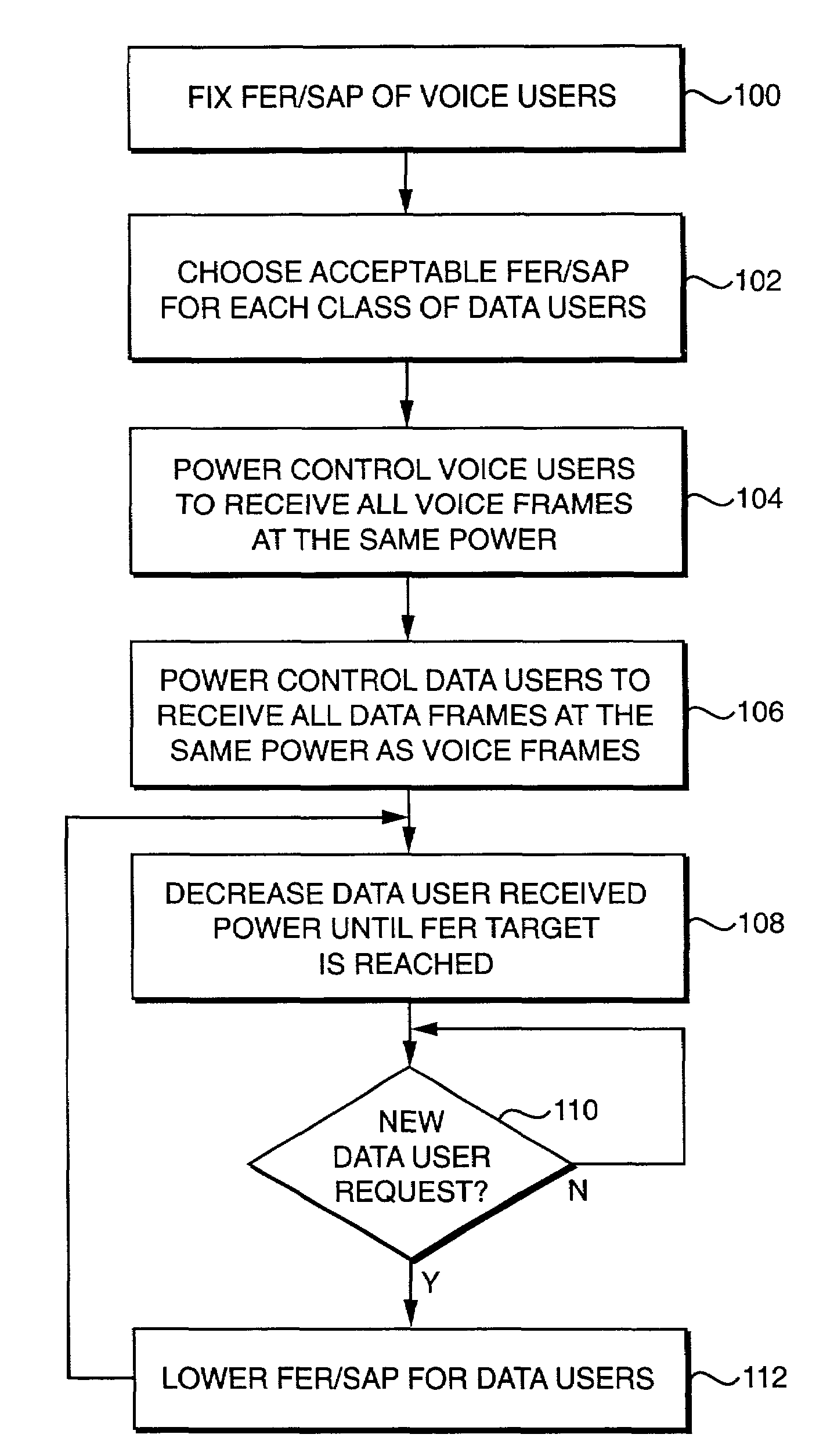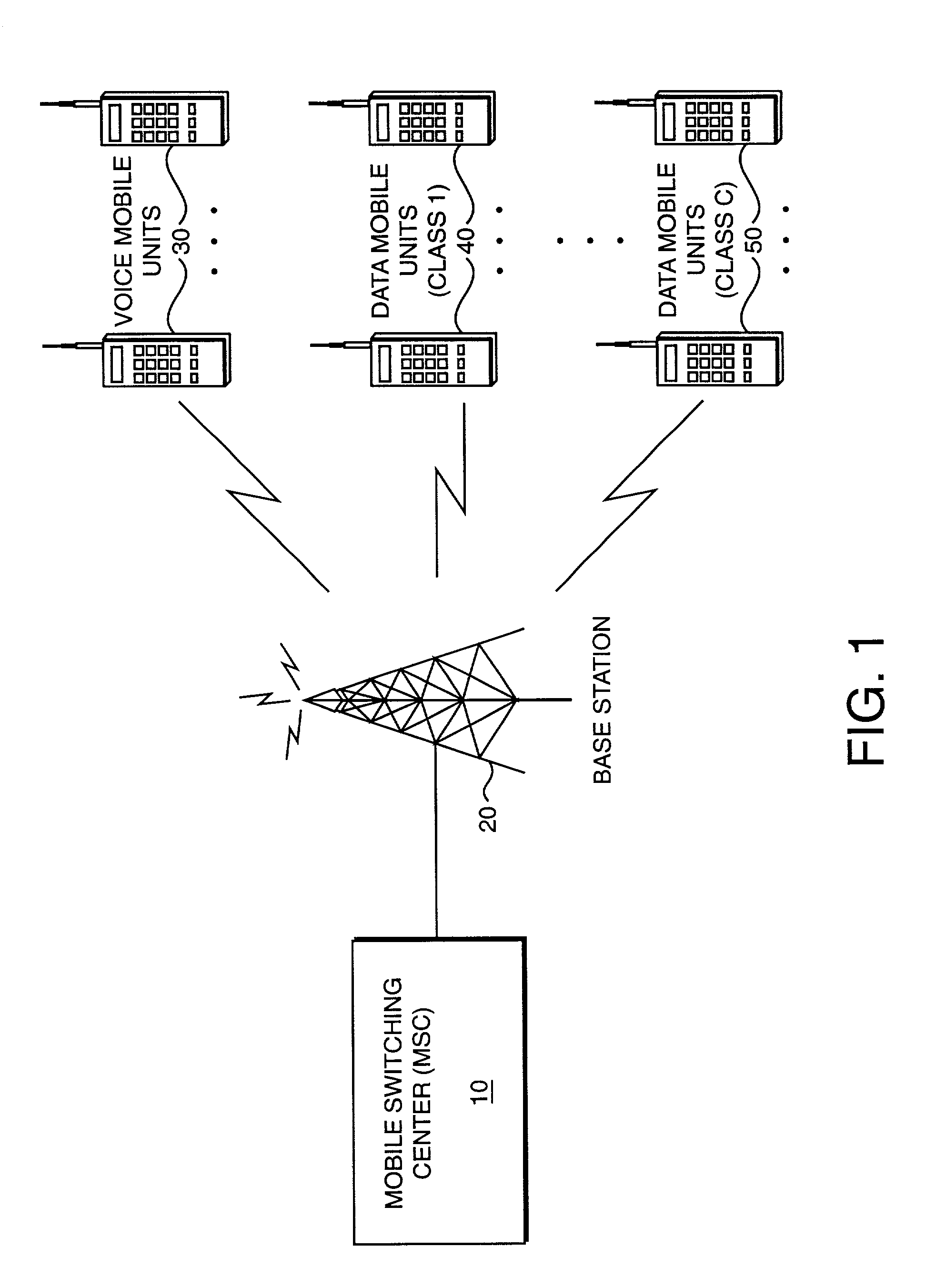Capacity enhancement for multi-code CDMA with integrated services through quality of service and admission control
a multi-code, quality-of-service technology, applied in the field of cellular networks, can solve the problems of poor quality of service, inability to address high-speed data applications, and inefficient use of system capacity, and achieve the effect of enhancing the capacity of a cdma cellular carrier
- Summary
- Abstract
- Description
- Claims
- Application Information
AI Technical Summary
Problems solved by technology
Method used
Image
Examples
Embodiment Construction
[0026]The following detailed description of the invention refers to the accompanying drawings. The same reference numbers in different drawings identify the same or similar elements. Also, the following detailed description does not limit the invention. Instead, the scope of the invention is defined by the appended claims and their equivalents.
[0027]Methods and systems consistent with the present invention provide a methodology for analyzing system capacity for CDMA networks with both voice users and multi-code data users. The methodology uses an interference-based model for the reverse link (mobile to base station) that determines the number of voice users Nv and the number of data users Nd,i belonging to each of C data classes i that a CDMA carrier can support. Methods and systems consistent with the present invention also provide admission control schemes that maximize system capacity by controlling power allocation, QoS levels, and / or user activity levels.
[0028]FIG. 1 is a syste...
PUM
 Login to View More
Login to View More Abstract
Description
Claims
Application Information
 Login to View More
Login to View More - R&D
- Intellectual Property
- Life Sciences
- Materials
- Tech Scout
- Unparalleled Data Quality
- Higher Quality Content
- 60% Fewer Hallucinations
Browse by: Latest US Patents, China's latest patents, Technical Efficacy Thesaurus, Application Domain, Technology Topic, Popular Technical Reports.
© 2025 PatSnap. All rights reserved.Legal|Privacy policy|Modern Slavery Act Transparency Statement|Sitemap|About US| Contact US: help@patsnap.com



